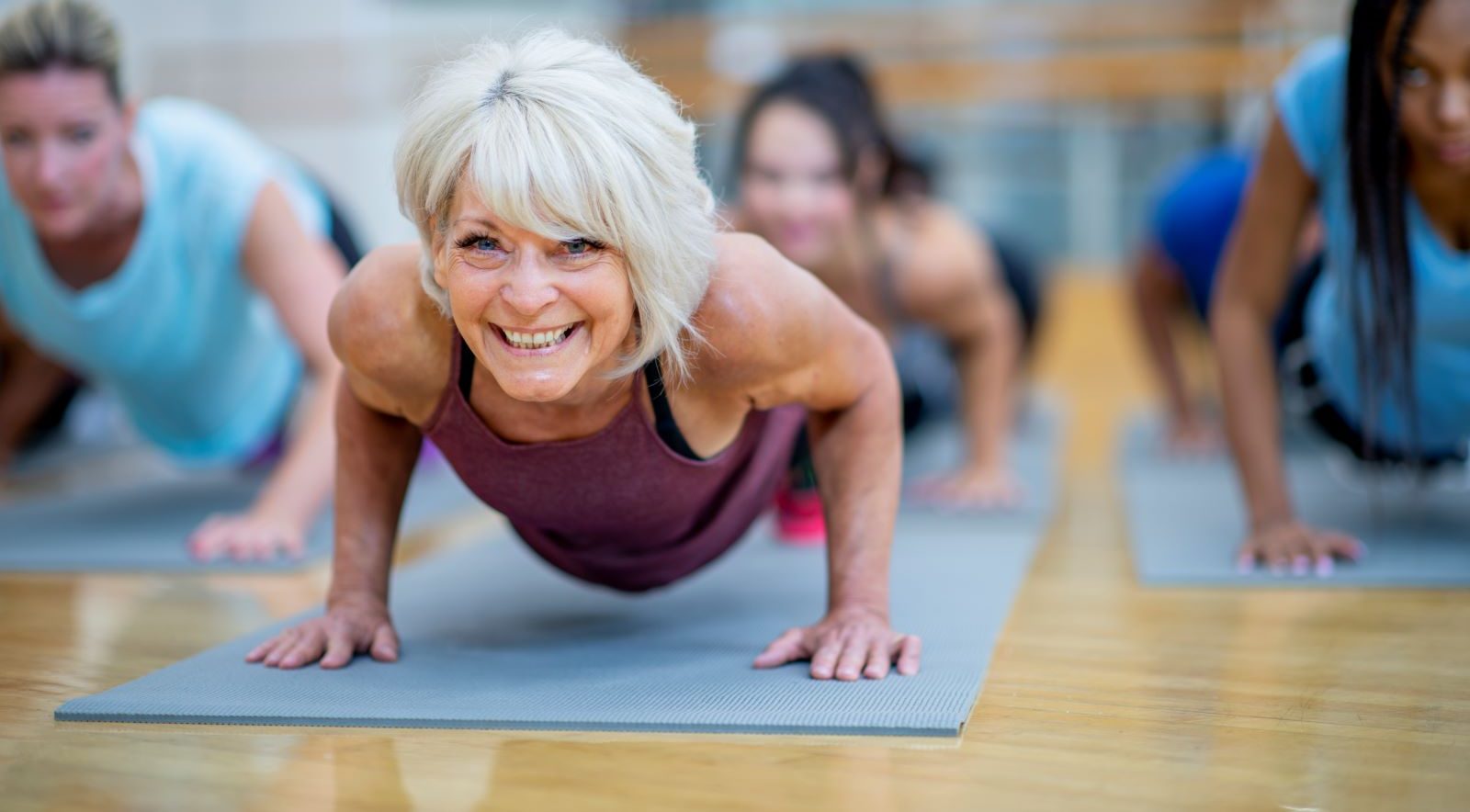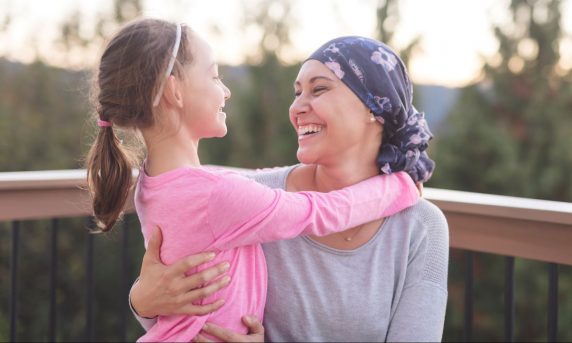Gretchin Bade, PT, CLT, Cert. MDT
Oncology Program Lead
Hartford HealthCare Rehabilitation Network
Do you want to feel stronger, sleep better and move more easily? Being physically active during and after cancer treatment is an important way to increase your strength, reduce fatigue and to help lift your spirits. Daily physical activity, including aerobic exercise and strength training, can help you get through your treatments and minimize treatment side effects. Additionally, stretching exercises can help restore flexibility in joints and muscles that may have lost range of motion and mobility due to surgery or radiation.
Research supports the many benefits of physical activity for cancer survivors. Benefits of being active include:
- Reduced fatigue, which is one of the most common side effects of cancer treatment,
- Improved symptoms of depression and anxiety which may also result in better sleep,
- Maintained or improved physical function.
Being active may also improve your immune system, appetite, muscle strength, range of motion and it simply helps your body and brain work better. Regular physical activity also decreases your risk of cancer recurrence.
When beginning a physical activity program remember to keep it simple. Try to avoid inactivity and get moving as soon as you can and you will feel better. Find opportunities to move throughout your day such as walking to the mailbox, dancing to your favorite music, or walking your dog. Choosing an activity that you like will give you a positive movement experience and create a habit. Many cancer patients choose to participate in “Livestrong at the YMCA” a free or low cost program designed for cancer survivors to re-introduce exercise in a supervised setting.
Be sure to talk to your health care provider before you start a new exercise program to find out if there are any activity limitations due to medications, surgeries, or treatment. Seek expert support if needed to help you design an activity plan. You can also ask for a referral to physical or occupational therapist who can help you develop a plan if needed. Build a plan by keeping a daily log of your exercise, fatigue level, medications, and treatments which will help you to see what works best for you. Finding an exercise partner may help you to stay motivated.
Your physical activity plan should include both aerobic activity and strength training. Aerobic activity increases your heart rate and breathing. The goal is to build up to doing 150 minutes per week of moderate intensity activity such as brisk walking, light cycling, yoga, tai chi or water exercise or 75 minutes per week of vigorous activity such as jogging, tennis, fast cycling or hiking hills when cleared by your physician. Aerobic activity is important because it improves the way your body stores and uses energy, as well as your stamina and heart health. You should work up to performing aerobic activity ideally to 5 days per week. During treatment, several short sessions may work better than one long one.
Check with your health care provider for specific precautions. If you have peripheral neuropathy, take care in walking on treadmills. Use handrails as balance may be an issue and in this case exercising on a stationary bike might be a better option. If you are at increased risk of infection or have irritated skin, avoid swimming pools. Avoid exercise if you have an active infection (fever), are just after surgery, have extreme fatigue or difficulty walking. Some treatments are associated with damage to your heart. Get a heart health check prior to starting exercise if needed.
The other component of your physical activity plan is strength training. Strength training builds muscle. Research supports that more muscle may improve the odds of surviving cancer. Also building muscle and strength makes daily activities like lifting laundry baskets or yardwork easier and safer.
You can do strength training in your home by using hand weights, resistance bands or your own body weight (for example, kitchen counter push-ups, chair squats) which are all great ways to start a strengthening program, or you can join a gym. The frequency for your program should be 2 to 3 days/week with a rest day in between each session. Start with light effort and build up to medium or hard effort as able. Remember if you need it, get help from a certified exercise professional, P.T. or O.T. They can teach you the right way to do aerobic and strengthening programs.
Aerobic activity and strength training are the heart of a program for people with cancer but you may also enjoy and benefit from stretching exercises, balance training, and by taking more steps. Stretching is important to maintain good flexibility and for injury prevention. Gently stretch your muscles to the point of feeling a comfortable strain not pain. Make sure to stretch specific areas recommended by your health care provider and to stretch after a warmup not when muscles are cold.
Taking more steps each day is a simple way to increase physical activity. Use a smart phone or activity tracker to measure your progress and to stay motivated. Slowly build up to 7,000 to 9,000 steps per day.
Many cancer survivors may benefit from balance training. Balance exercises include standing on one foot, walking on a line or using a balance board. Train in an uncluttered area and use a chair or wall for support if needed. You may also benefit from a referral to a physical therapist for balance training.
With all of these activities in order to stay safe and injury free, begin with light to medium effort. If you experience extreme fatigue (typically 2-3 days after chemo), you may wish to still do light activity. Just cut back exercise time on those days. Gradually increase your pace and time spent being active. Start low and go slow! Warm up before and cool down after exercise at an easy pace. Again, find an activity that you enjoy to create a positive movement experience and to remain active for life.
Another component of your physical activity plan is to practice good posture on a daily basis. There are many benefits to practice good posture during treatment and in survivorship. Practicing good posture prevents tight muscles, pain, loss of strength and stress on your joints. It improves your mood and boosts your energy levels which can help to combat cancer related fatigue. Proper posture also aids in optimal digestion, it increases your lung capacity to make breathing easier, it help you maintain greater function as you age and it assists in improved concentration.
Diaphragmatic breathing is another useful technique in survivorship. There are many benefits of practicing diaphragmatic breathing which is also known as belly breathing or relaxation breathing. Belly breathing is a learned type of breathing in which the breath is initiated from the belly instead of the upper or middle chest. This type of breathing relieves fatigue, reduces stress, improves sleep, increases mindfulness and improves lung capacity.


